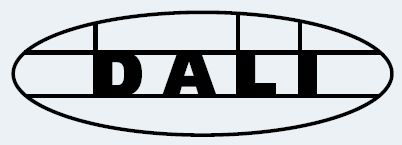Published: 18 August 2014
Category: Industry News
Everything you need to know about the digital control protocol and how it can help

1. What it is
DALI is the Digital Addressable Lighting Interface. It enables easy and intelligent management of lighting equipment. The DALI protocol is managed under the internationally recognised IEC standard 62386 and is promoted by the DALI working party, part of the electrical manufacturers’ association ZVEI. The working party promotes the development and use of the protocol, as well as working to recruit members and make sure the DALI logo is properly used. DALI members include well-known lighting companies such as Philips, Osram, Helvar, Tridonic, Schneider, Mackwell, Lutron, Insta, Panasonic, Acuity and LG. The organisation aims to improve understanding of DALI in the market, and is working to become more dynamic and accessible to all industry stakeholders, with information available to members and non-members through a variety of channels.
2. What the standard covers
The standard 62386 describes the protocol for communications and control of lighting equipment. This includes control gear (not just ballasts but also LED drivers, switching devices, emergency inverters, colour control and so on) and control devices (buttons, rotaries and sliders, presence detectors, light sensors…) as well as the requirements for bus power supplies, which may be standalone devices or integrated with control gear or control devices.
3. The DALI protocol is open
The key feature of DALI is the uniformity of the standard and interoperability with a range of system components. No other standard in the lighting industry is as open and futureproof. In principle, a DALI lighting system can have components from many different suppliers, all working from the same standard. To support the ‘open protocol’ philosophy, DALI plans to create training forums to explain the fundamentals of DALI for contractors.
4. DALI is a global standard
Due to the growth of LED, the increasing demand for energy saving and growing awareness of lighting control systems, DALI has become more important than ever before. Today, with almost 110 international members, DALI is a global standard for professional digital lighting.
5. DALI enables total control
Compared to a fixed output installation, the dimming and individual control capability provided by DALI enables considerable energy savings. In combination with dimmable drivers, presence and daylight sensors, energysavings of up to 80 per cent can be achieved. If the operation of the lighting is to be rearranged or regrouped, the costs per circuit in a fixed output system could be four times higher than those in a DALI system. The ability to send queries and obtain replies – two-way communication – can greatly reduce maintenance costs. For example, DALI allows automatic testing and reporting of monthly function tests of emergency lighting. In addition, energy consumption and lamp condition can be checked for each luminaire, very easily and at no additional cost.
6. What the DALI logo stands for
The DALI trademark is an indication that the product is compliant. The logo and text may be used on products and product literature by DALI members, if the product has successfully passed the official tests. A list of members can be found at www.dali-ag.org.
7. How DALI tests
The official DALI test system helps manufacturers ensure their DALIcompliant products will have the highest levels of interoperability with other compliant products. Testing can be done either by an approved test house or by DALI members themselves. Later this year, DALI will require test results to be uploaded to the DALI website, so checks can be carried out before use of the logo is granted. This will also allow members to list their compliant products in a searchable database.
8. DALI creates potential for connectivity
The DALI protocol includes definitions of commands, reactions of devices to these commands, and requirements for devices. Wireless can be used in a DALI system – for example by using an interface (gateway) between the wireless devices such as buttons and sensors, and the DALI network. This can provide the convenience of wireless together with the reliability and low cost of wired connections to luminaires. Interfaces to many protocols are available, and more are still being added. Examples include TCP/IP, BACnet and KNX. The standard states that the DALI protocol is designed to sit below the level of a building management system.
9. No job is too big or small
A DALI lighting control system can be as simple as a single luminaire containing a driver and a sensor. The same luminaire could be connected with other DALI devices to form a larger system – and DALI systems don’t stop at a few rooms. Using gateways, multiple DALI subnets can be connected into seamless systems, allowing many thousands of devices to be connected in a single system. This allows the strengths of DALI as a dedicated lighting control protocol to be used. A good example of this is the 2014 DALI award winner, the World Trade Centre in Abu Dhabi (pictured).
10. DALI is for all kinds of lighting control
DALI’s road map is about much more than just fluorescent ballasts. Already the standard includes LED drivers, emergency devices and other control gear devices, and in the future DALI will encompass all types of lighting control products, including PIR sensors, rotary control and user interfaces.
